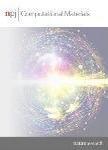Computational screening of materials with extreme gap deformation potentials
作者机构:Institut für Festkörpertheorie und-optikFriedrich-Schiller-Universität Jena and European Theoretical Spectroscopy FacilityMax-Wien-Platz 107743JenaGermany CFisUCDepartment of PhysicsUniversity of CoimbraRua Larga3004-516CoimbraPortugal Institut für PhysikMartin-Luther-Universität Halle-WittenbergD-06099HalleGermany
出 版 物:《npj Computational Materials》 (计算材料学(英文))
年 卷 期:2022年第8卷第1期
页 面:1482-1491页
核心收录:
学科分类:08[工学] 0805[工学-材料科学与工程(可授工学、理学学位)] 080502[工学-材料学] 0703[理学-化学]
基 金:S.B.acknowledges the financial support from the Volkswagen Stiftung(Momentum)through the project“dandelion” P.B.acknowledges the financial support from the CFisUC through the project UIDB/04564/2020 and FCT under the contract 2020.04225.CEECIND
主 题:deformation properties. extreme
摘 要:In this work,we present a large-scale study of gap deformation potentials based on density-functional theory calculations for over 5000 *** expected,in most cases the band gap decreases for increasing volume with deformation potentials that can reach values of almost−15 *** find,however,also a sizeable number of materials with positive deformation *** members of this group are halide perovskites,known for their applications in *** then focus on understanding the physical reasons for so different values of the deformation potentials by investigating the correlations between this property and a large number of other material and compositional *** also train explainable machine learning models as well as graph convolutional networks to predict deformation potentials and establish simple rules to understand predicted ***,we analyze in more detail a series of materials that have record positive and negative deformation potentials.



